There are no sure things in the NFL draft, but quarterback may be the riskiest position of all. No defense revolves around a single player the way every offense revolves around the quarterback. Trust your offense to the wrong young quarterback, and your team isn't going to climb back into playoff contention. Recent history is littered with teams that drafted a quarterback high, only to find out that player couldn't play at the NFL level.
The lessons of history can at least help us figure out how much of a risk each quarterback prospect will be. That's the point of Football Outsiders' Quarterback-Adjusted-Stats-and-Experience (QBASE) projection system. It looks at college performance, experience and expected draft position (to incorporate scouting information that college stats will miss). To allow some time for development, QBASE projects a quarterback's efficiency (passing only) in Years 3-5 of his career, according to Football Outsiders' defense-adjusted yards above replacement (DYAR) metric. 50,000 simulations produce a range of potential outcomes for each prospect, with players drafted later generally having a larger range of possibilities.
QBASE favors quarterbacks expected to go high in the draft who also have a relatively long résumé of college success according to the stats. Those stats include completion percentage, yards per attempt and team passing efficiency. These numbers are adjusted both for the quality of the defenses that a prospect had to face as well as the quality of his offensive teammates. QBASE is meant to only be used on players chosen in the top 100 picks; after that, the judgment of scouts becomes even more important, and statistics become even less predictive.
It's important not to overestimate the importance of a small difference in the QBASE projections. Most of this year's top quarterbacks are grouped together in the middle of the scale. It's a bit of a surprise that Sam Darnold came out with a lower QBASE rating than some of the other top prospects -- Josh Rosen, for example. But if I were the analytics director for an NFL franchise, I would feel no need to disagree with a scouting director who placed Darnold ahead of Rosen.
However, there is one top prospect who QBASE clearly likes ahead of all the others, and one top prospect whose statistical profile is a gigantic red flag. We explain both projections below, along with the QBASE projections for six other top quarterbacks based on Scouts Inc. rankings for the 2018 draft.

Baker Mayfield, Oklahoma Sooners
Scouts Inc. ranking: No. 13
Baker Mayfield's stats at Oklahoma were completely ridiculous, so it's no surprise that a stat-based projection system such as QBASE loves him with the heat of a thousand suns.
One of the stats included in QBASE is adjusted passing yards per attempt. This metric looks at yards per attempt, then adds 20 yards for each touchdown and subtracts 45 yards for each interception. Mayfield is the only quarterback in FBS history to top 12.0 APYA in a season, and he's done it twice: 12.3 APYA in 2016, and then 12.9 APYA in 2017. Mayfield also completed more than 70 percent of his passes as a senior, and Oklahoma's offense was No. 1 in Football Outsiders' passing S&P+ rating.
On top of this, the No. 1 predictor of NFL success for top quarterback draft picks is still how many years of starting experience they had in college. Mayfield is the only one of this year's top prospects with four years of starting experience. (Luke Falk, likely to be drafted later, started for three and a half seasons.)
As with Rosen, QBASE docks Mayfield a bit because he played with high-quality teammates. Both OT Orlando Brown and TE Mark Andrews are likely to be drafted in the first three rounds this year, and WR Marquise Brown and G Ben Powers are likely to go in the first three rounds of the 2019 draft. However, Mayfield does not get docked for playing an easy Big 12 schedule. Because of the Big 12 championship game, the Sooners had to play twice against TCU, which at No. 15 in S&P+ was the Big 12's best pass defense. Mayfield also had to face Ohio State (No. 12) and Georgia (No. 6), so the average pass defense he faced was ranked 52.8, the same as Rosen and better than any of this year's prospects other than Darnold.
Put all these elements together, and Mayfield has the fourth-highest QBASE projection of any prospect since 1997. The only players projected higher were Philip Rivers, Carson Palmer and Donovan McNabb. Here are the top 10 prospects since 1997 based on the current formula:
None of this is a guarantee that Mayfield is going to be a star in the NFL. Situated near the QBASE top 10 are prospects who didn't pan out, including John Beck, Matt Leinart and Christian Ponder. But based on his college performance, Mayfield has the best odds of any quarterback in this class of being an elite starter in the NFL, and the lowest odds of being a bust.
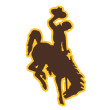
Josh Allen, Wyoming Cowboys
Scouts Inc. ranking: No. 7
Like Darnold, Allen was only a two-year starter in college. But Allen's statistics are horrifying compared to Darnold's.
Allen has an obscenely powerful arm, but it's a howitzer without a targeting system. He completed just 56.3 percent of his passes last year. Here is the list of quarterbacks chosen in the top 100 picks since 2005 despite having a completion rate below 58 percent in their final college season: Andrew Walter (2005), Jake Locker (2011), Christian Hackenberg (2016), Connor Cook (2016) and C.J. Beathard (2017). That's it.
Last year, Wyoming finished 119th in passing S&P+, out of 130 teams in FBS. That will be the lowest rank ever for a quarterback chosen in the top 100 picks of the NFL draft. Yes, I know, Allen wasn't playing with a bunch of NFL-bound talent around him. He also wasn't facing a lot of NFL-bound talent on defense. The average opponent faced by Wyoming ranked just 83.5 in pass defense S&P+. Allen's performance against top opponents was brutal. He threw two interceptions and zero touchdowns against Iowa, with just 4.35 yards per attempt. He completed just 9 of 24 passes with 64 yards and a pick against Oregon. He completed 44 percent of passes with two picks and only 131 yards against Boise State.
Since 1997, there have been 27 quarterbacks chosen in the top 100 with QBASE ratings below zero. The best of these quarterbacks was either Josh McCown or Brian Griese. It's a terrible group of quarterback busts. Negative-QBASE passers chosen in the first round include Mark Sanchez, Josh Freeman, Kyle Boller, Rex Grossman, J.P. Losman and Patrick Ramsey.
Allen supporters talk about how his 2016 season was much better than his 2017 season, and it was. In 2016, Wyoming finished 52nd in passing S&P+. Allen still couldn't complete more than 56.0 percent of his passes. If we pretend Allen's 2017 season never happened, then Allen has a QBASE of 161, still the worst of this year's top prospects.
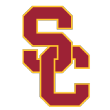
Sam Darnold, USC Trojans
Scouts Inc. ranking: No. 3
Based on Football Outsiders' passing S&P+ stats, the USC Trojans had college football's No. 3 passing offense when Darnold was a redshirt freshman in 2016. That dropped to 10th in his sophomore year -- but 10th out of 130 FBS teams is still pretty good. So why is Darnold's QBASE lower than that of other prospects expected to be chosen after him in this year's draft?
The problem is that Darnold has only two years of experience as a starting quarterback in college football, and the track record of top-100 quarterbacks with only two college years started is downright lousy. The best among them are Cam Newton, Joe Flacco, Michael Vick and Alex Smith. Aaron Rodgers could count as either a two-year or three-year starter, since like Newton, he also had a year starting in junior college. But for the most part, highly drafted quarterbacks with only two years of college starting experience have underperformed their draft position. Included on the list are some of the biggest busts in NFL draft history: JaMarcus Russell, Ryan Leaf, Akili Smith, Blake Bortles, Mark Sanchez and so forth.
Of course, there was a two-year college starter selected in the later rounds of the draft who turned out to be pretty successful in the NFL: Tom Brady. But Brady is the historical outlier of all outliers, not a historical precedent on which you base a top-five draft pick.
To overcome this penalty in QBASE, a prospect needs to have dominating statistics. Cam Newton did. Alex Smith did. Sam Darnold did not. His stats don't particularly stand out when compared to Josh Rosen, Lamar Jackson or Mason Rudolph.
All college quarterbacks are a risk in the NFL. Does Darnold's lack of college experience somehow negate what scouts see on film? No, but we're trying to determine here which quarterbacks are high-risk and which quarterbacks are really high-risk.
In Darnold's defense, the track record of two-year starters may look a lot better with a couple of more years of data. Carson Wentz was a two-year starter, as were Deshaun Watson and Jameis Winston. Also, Darnold faced the most difficult 2017 schedule of any of this year's top quarterback prospects, and his raw statistics are a little more impressive in that light. But that element is already factored into Darnold's QBASE rating.
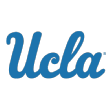
Josh Rosen, UCLA Bruins
Scouts Inc. ranking: No. 8
Rosen is a very typical first-round quarterback prospect. That's not meant to be a negative statement. The average QBASE for first-round picks since 1997 is 620; Rosen is at 623. The average first-round quarterback has 2.7 years of starting experience; Rosen has three. Rosen's APYA (adjusted passing yards per attempt) of 8.5 and completion rate of 62.6 percent are a little below average for a first-round quarterback prospect, but not by much. (The averages are 9.0 and 64.0, respectively.)
Rosen played a slightly harder than average schedule, but also gets docked by QBASE because he had a lot of high-rated talent around him at UCLA. OT Kolton Miller and TE Caleb Wilson are likely to be first-round picks (Miller this year, Wilson in 2019). C Scott Quessenberry and WR Jordan Lasley are also likely to be drafted this year.
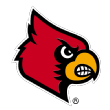
Lamar Jackson, Louisville Cardinals
Scouts Inc. ranking: No. 38
QBASE is projecting only a quarterback's passing performance, so it doesn't care about Jackson's phenomenal running abilities. But QBASE also clearly thinks that talk of Jackson switching positions is kind of silly. He's just as good a quarterback prospect as any of this year's other young passers not named Baker Mayfield.
Jackson has one stat that lags far behind his others: a completion rate of just 59.1 percent in 2017 and just 57.0 percent for his three-year college career. But his AYPA (8.7) and Louisville's passing S&P+ (11th, right below USC) peg him as a late first-round pick. And unlike other prospects who led top passing offenses last year, Jackson didn't have a lot of great talent around him. Any Louisville receivers and linemen who are drafted (perhaps OT Geron Christian this year and WR Jaylen Smith next year) are likely to be Day 3 picks.
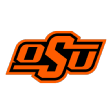
Mason Rudolph, Oklahoma State Cowboys
Scouts Inc. ranking: No. 79
Rudolph isn't quite at the Baker Mayfield level, but his raw stats last season were outstanding.
A 10.7 AYPA far surpasses the rest of these prospects, thanks in large part to 37 touchdowns with only nine interceptions. A completion rate of 65.0 percent is also second among these 2017 prospects.
Rudolph's QBASE is lower for two reasons. First, QBASE is factoring in that scouting consensus has Rudolph as a third-round selection, not a first-rounder. Second, unlike Mayfield, Rudolph is getting penalized for putting up his big stats against an easier Big 12 schedule. Mayfield had five games against pass defenses ranked in the S&P+ top 20, while Rudolph had only two (No. 15 TCU and No. 16 Texas).

Kyle Lauletta, Richmond Spiders
Scouts Inc. ranking: No. 89
Projecting FCS-level quarterbacks is extremely difficult. For Lauletta's projection, we approximated that the pass defenses of the Colonial Athletic Association are roughly equivalent to the lowest FBS conference, the Sun Belt. That would give the average defense faced by Lauletta a rank of 90.8, the worst of this year's top prospects.
Lauletta's 8.7 AYPA in his senior year is similar to what Carson Wentz (8.7) and Joe Flacco (8.6) had in their final FCS years, but is far behind the 10.0 APYA put up by Jimmy Garoppolo.

Luke Falk, Washington State Cougars
Scouts Inc. ranking: No. 104
Falk is right in the cusp of qualifying for QBASE, depending on where he is selected on draft day. The basic idea of only using QBASE on the top 100 picks is that if you drop to the third day of the draft, scouts have probably done a good job of determining that your great college stats are a sign of a system quarterback rather than a top NFL talent.
But Falk didn't even have great college stats. His 6.8 APYA last year was even lower than Allen's 6.9, thanks to short throws (just 10.1 yards per completion) and 13 interceptions.
